
Yanghwajin Foreign Missionary Cemetery is an international cemetery designated by King Gojong that holds the tombs and graves of many foreign missionaries. The cemetery is also known as Hapjeong-dong International Cemetery.
The need for a foreign cemetery in Seoul was apparent in July, 1890 after the death of John Heron, a Presbyterian minister. Up until this point, foreigners were often buried at Chemulpo Foreigners’ Cemetery in Incheon.
A medical missionary, Dr. Horace Allen, searched and found a place for a cemetery. He obtained the rights to the land on the banks of the Hangang River. He called the cemetery Yanghwajin after the name of an old ferry crossing. In 1885, Dr. Allen became the director of Gwanghyewon, the first western style hospital in Korea. Dr. Allen died in 1932 and is buried in this cemetery.
A quote on the tomb of Homer Hulbert (1863-1949) reads “I would rather be buried in Korea than in Westminster Abbey.” He was an independence activist from Japan and today is highly respected.

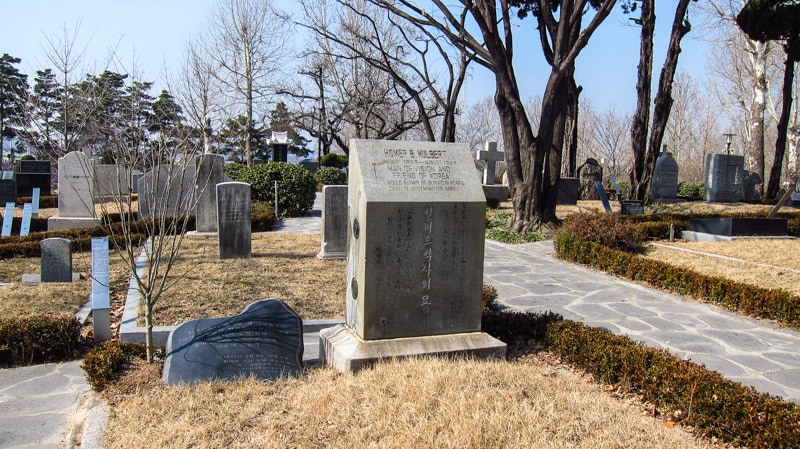
Many of the tombstones were damaged during the Korean War (1950-1953). Evidence of this damage still exists today as members of the foreign community decided against repairing many of the fractured tombs. The designs of the tombs found here are western in style, which is unique for Korea.
It is estimated that there are 376 people buried here (221 adults and 133 children). There are also an additional 23 unmarked graves. Buried here are missionaries from all over the world including the United States, Australia, Japan, Korea, Russia, and Europe.
On the other side of Yanghwajin Foreign Missionary Cemetery is the Jeoldusan Martyr’s Shrine.
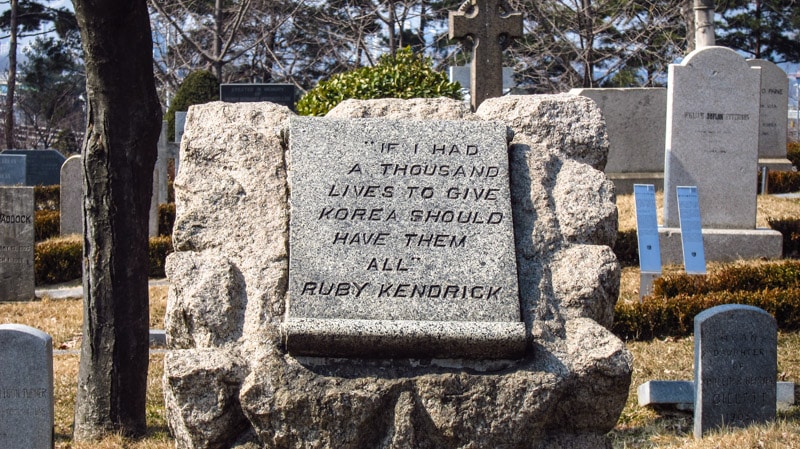
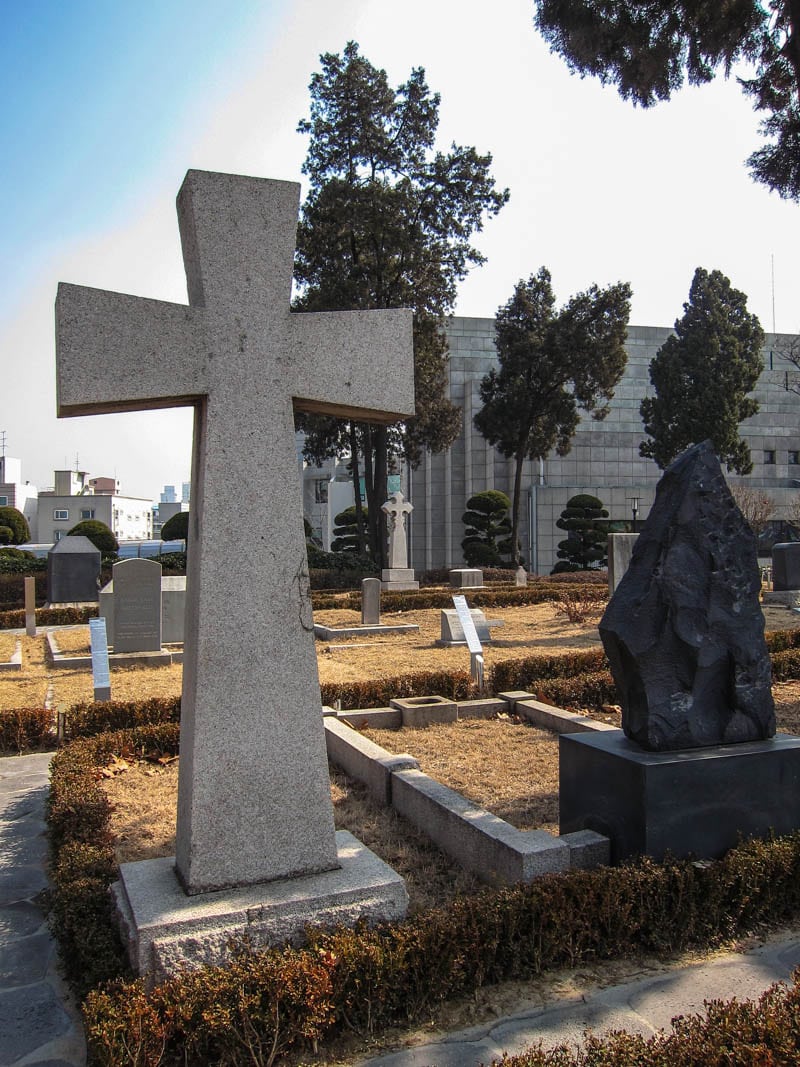
Yanghwajin Foreign Missionary Cemetery Information
Hours
Monday-Saturday : 10:00-17:00
Free guided tours in English are available Monday through Saturday at 10:00, 11:30, 14:00, and 15:30. Reservations are required and can be made at https://yanghwajin.net/guide/reservation_en.php.
Closed on Sundays
Admission
Free
Address
46 Yanghwajin-gil, Mapo-gu, Seoul, South Korea
GPS Coordinates: 37.546525, 126.910911
How to Get Here
Take Subway Line 2 or Line 6 to Hapjeong Station (Exit 7)
Yanghwajin Foreign Missionary Cemetery Video
Map
Additional Resources
Viator by TripAdvisor
Viator is a popular online platform that helps travelers book tours, activities, and unique experiences worldwide, including in Seoul. It connects users with a wide selection of options – from sightseeing tours to cultural events and outdoor adventures – all offered by local providers.
Klook
Klook offers discounted tickets and reservations for various attractions and services in Seoul, from theme parks and museums to tours and transportation options.
Rakuten
Save money while exploring Seoul with Rakuten's cashback program. Book your hotels or other services through Rakuten and enjoy cashback rewards and exclusive deals.
If you sign up using the link below, you could earn $30 cashback on your first purchase over $30.
Book Recommendations
For an immersive guide to Seoul, many travelers choose to bring a book along. Fodor's Seoul, for example, offers detailed recommendations on sights, restaurants, maps, and travel tips.
Nearby Sights
Jeoldusan Martyrs' Shrine

Jeoldusan Martyrs' Shrine is a Catholic shrine on the Hangang River dedicated to those who gave up their lives during the Byeongin persecutions of 1866. In late 1866, nine French missionaries were martyred. This caused two attempted invasions into Korea by a French fleet. After the attempted invasions, the Joseon government punished, targeted, and brutally murdered many French and native Korean Roman Catholics.
Mangwonjeong Pavilion
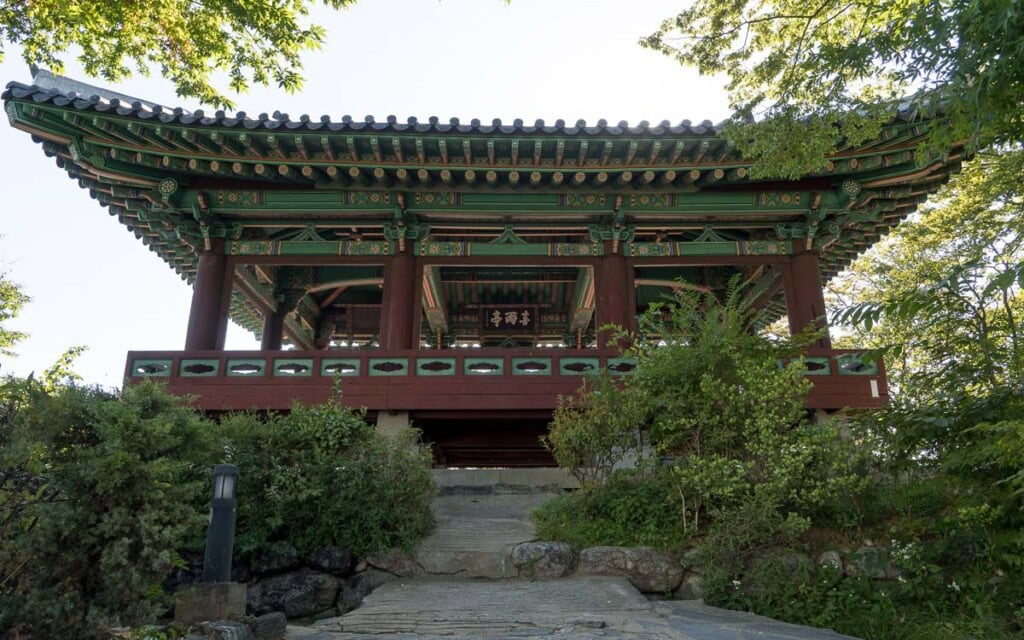
Mangwonjeong Pavilion is a historic pavilion in Seoul, originally built in 1424 during the Joseon Dynasty by Grand Prince Hyoryeong. The pavilion seen today dates back to 1989, as a flood destroyed the original in 1925. Grand Prince Hyoryeong, King Sejong's older brother, built a villa at the site in 1424. King Sejong, also known as Sejong the Great, was the fourth ruler of the Joseon Dynasty and reigned from 1418 to 1450.
Hongdae (Hongik University Area)

Hongdae is a vibrant, energetic, and youthful neighborhood and nightlife district popular for indie music, street art, galleries, cafes, and shops. The area is named after the nearby Hongik University (Hongik Daehakgyo), one of the most prestigious fine arts universities in Korea. Since Hongik University was built in 1948, it has gone on to be one of the top art and design schools in the country.
Seonyudo Park

Seonyudo Park is a popular park and open space located on an island on the Hangang River that was formerly used as an industrial water treatment plant. The small island, located west of Yeouido, was opened in 2009 after city officials realized that the island could be better used as an urban park instead of an idle industrial plant.
Seonyudo Bridge

Seonyudo Bridge is a pedestrian only footbridge that connects Yanghwa-dong in the south to Seonyudo Park located on the Hangang River. The name means "spending time idly in the scenic heaven." It is also known as the footbridge of peace. This beautifully arched bridge was designed by French architect Rudy Ricciotti to commemorate the 100th anniversary of diplomatic relations between Korea and France.
Hongdae Free Market
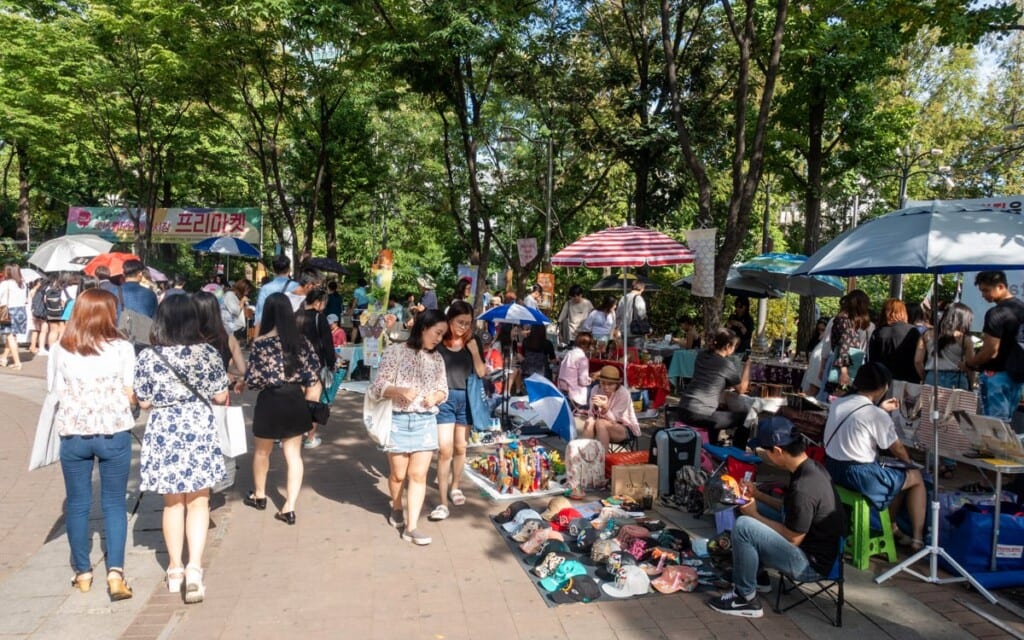
The Hongdae Free Market is a fun and unique arts and crafts market where artists, performers, musicians, and visitors can interact face to face. Artists from all over Korea, and even from other countries, meet here each Saturday from March to November. These artists display and show visitors their own works of arts and crafts.
Last Updated on Mar 11, 2025